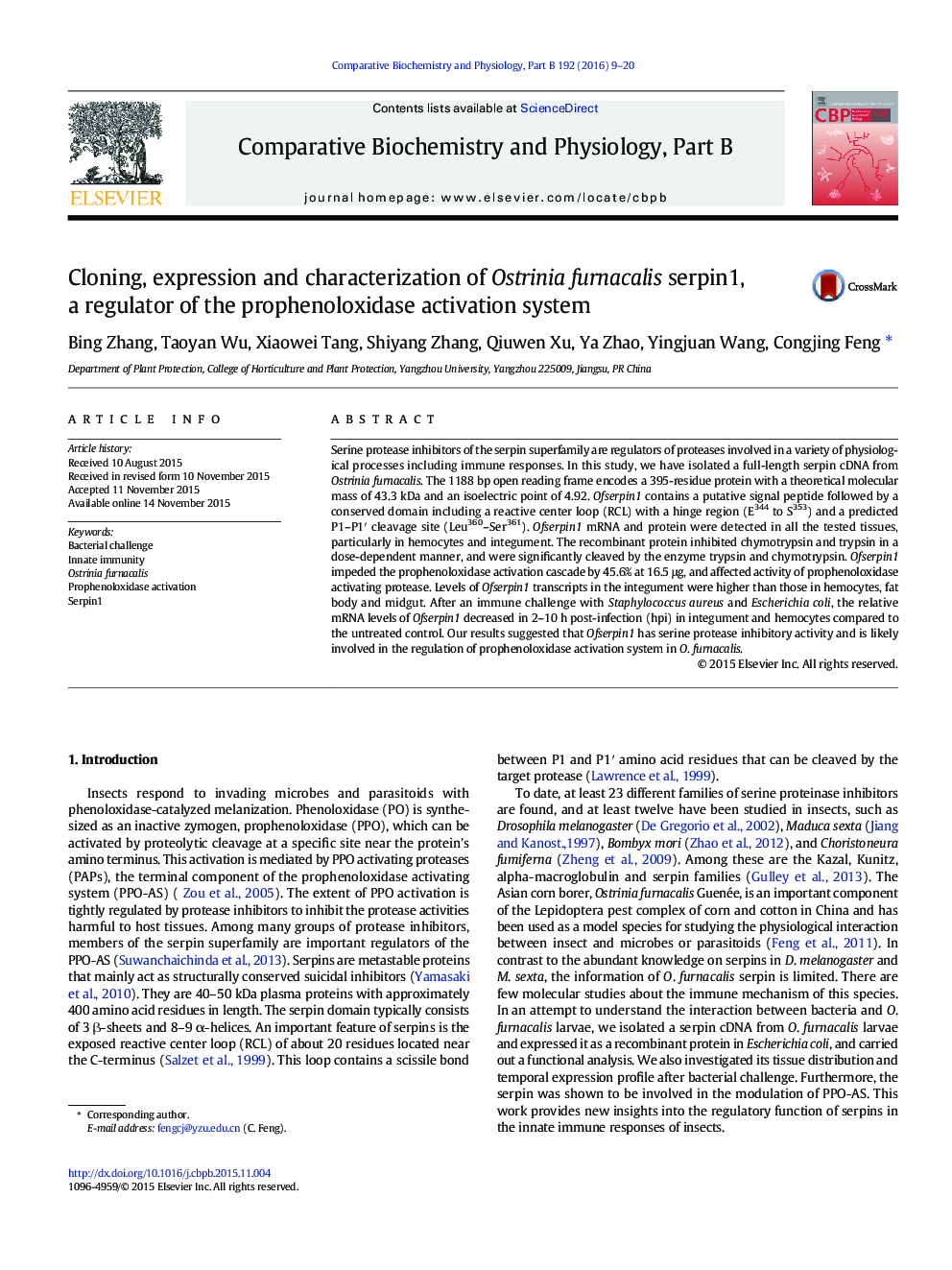| Article ID | Journal | Published Year | Pages | File Type |
|---|---|---|---|---|
| 1975099 | Comparative Biochemistry and Physiology Part B: Biochemistry and Molecular Biology | 2016 | 12 Pages |
Serine protease inhibitors of the serpin superfamily are regulators of proteases involved in a variety of physiological processes including immune responses. In this study, we have isolated a full-length serpin cDNA from Ostrinia furnacalis. The 1188 bp open reading frame encodes a 395-residue protein with a theoretical molecular mass of 43.3 kDa and an isoelectric point of 4.92. Ofserpin1 contains a putative signal peptide followed by a conserved domain including a reactive center loop (RCL) with a hinge region (E344 to S353) and a predicted P1–P1′ cleavage site (Leu360–Ser361). Ofserpin1 mRNA and protein were detected in all the tested tissues, particularly in hemocytes and integument. The recombinant protein inhibited chymotrypsin and trypsin in a dose-dependent manner, and were significantly cleaved by the enzyme trypsin and chymotrypsin. Ofserpin1 impeded the prophenoloxidase activation cascade by 45.6% at 16.5 μg, and affected activity of prophenoloxidase activating protease. Levels of Ofserpin1 transcripts in the integument were higher than those in hemocytes, fat body and midgut. After an immune challenge with Staphylococcus aureus and Escherichia coli, the relative mRNA levels of Ofserpin1 decreased in 2–10 h post-infection (hpi) in integument and hemocytes compared to the untreated control. Our results suggested that Ofserpin1 has serine protease inhibitory activity and is likely involved in the regulation of prophenoloxidase activation system in O. furnacalis.
